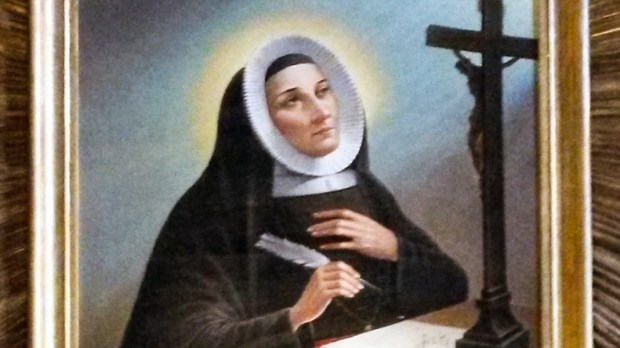Maria de Mattias was born and baptized on February 4, 1805, in the small town of Vallecorsa, about 50 miles south of Rome. Her father, Giovanni de Mattias, came from a prominent family in the area and was well-to-do. Maria was the second of four children. Her sister Vincenza was 11 years older than her, so they did not have much in common socially. Her two brothers, Antonio and Michele, were both several years younger.
During this time, political turmoil was a way of life in Vallecorsa. Many of the young local men were gang members, and they were continually raiding and intimidating the villagers. Gang leaders planned kidnappings because children from families with money often brought handsome ransoms. Maria, being from a family with money, was a prime candidate for abduction. She did not leave her home unless accompanied by her father.
As is often the case for girls born into her situation, Maria was quite vain and enjoyed relishing her image in the mirror as she brushed out her long blond hair. However, that all changed as she approached her 16th birthday. One day, as she was preening herself, she saw a Lady looking back at her from inside the mirror. Maria was quite startled, and then the Lady said, “Come with me.”
Maria began to converse with the Lady and asked for her help. She wanted to learn how to read. Her father did not believe that girls needed to know how to read or write, so Maria had never learned. The Lady told her not to worry and that she would help her. Soon Maria was able to take letters and put them into words, and before long, the young woman was reading. With the heavenly help of an extraordinary Lady, she had taught herself to read.
She kept at it and soon was reading spiritual books that the family had at home. The Lady told her she was the Blessed Mother, and during several more conversations, Maria realized that she was to dedicate her life to God. The only thing left for her to do was figure out how.
During the Lenten season of 1822, Gaspar del Bufalo(the founder of the Missionaries of the Precious Blood), came to town with his mission team to preach. The mission went on for three weeks, and the missionaries preached on death, judgment, punishment, and hell versus God’s love, mercy, and forgiveness.
Maria heard Gaspar ask his listeners to imitate Jesus by giving their lives for their brothers and sisters who needed it.
By the time the mission was over, Maria de Mattias was filled with love for her neighbor and was determined to bring conversion and salvation to those Christ loved.
Gaspar del Bufalo had a right-hand man by the name of John Merlini. Two years later, it was Merlini who came to Vallecorsa to preach the mission. Merlini and his followers had been busy putting together associations for girls, women, boys, men, and priests. Maria felt drawn to this man but was afraid to approach him.
Finally, she did, and they became good friends. Merlini put her in charge of the Daughters of Mary, the girl’s association. Maria took charge, and more and more girls began coming to her house for talks, study, and prayer. Before long, older women were coming to the house. The de Mattias house had turned into a school for young and old alike.
On March 4, 1834, when she was 29 years old, and under the guidance and help of John Merlini, Maria founded the Sisters Adorers of the Blood of Christ. The order was established primarily to be a teaching order. Maria made a public vow of chastity, and John Merlini gave her a small gold heart imprinted with three drops of blood. This became the symbol of the order, and to this day a silver heart with three red dots is worn by the sisters all over the world. Pope Pius IX gave papal approval to the Order in 1855, and John Merlini became Maria’s spiritual director.
Today more than 2,000 sisters continue the work of their foundress in countries all around the world including Brazil, Vietnam, South Korea, the United States, Bolivia, Guatemala, and even Liberia, where five of the sisters were martyred in 1992.
St. Maria de Mattias was canonized by Pope John Paul II on May 18, 2003. We ask her to pray for us.
Read more:
Litany of St. Rose of Lima: For increase in holiness and decrease in vanity

